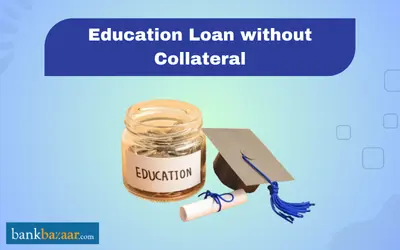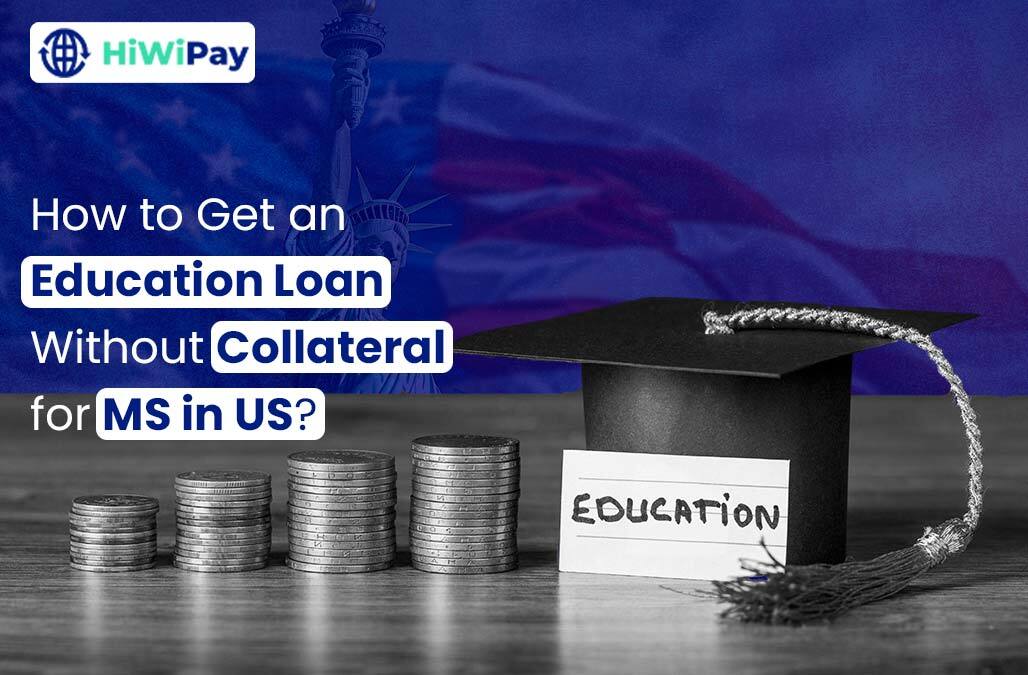Pursuing higher education is a significant investment, and for many students in India, education loans offer a practical way to fund their academic goals. However, with the rising cost of education and the burden of repayment looming post-graduation, many borrowers find themselves struggling to manage their loan obligations. One of the most viable solutions to ease this burden is refinancing.
But what exactly does refinancing mean in the context of education loans in India? Can it really help reduce the repayment pressure? What are the eligibility criteria, and how can students and graduates take advantage of this financial tool? In this comprehensive article, we’ll explore every aspect of education loan refinancing in India to help you make informed decisions.
Table of Contents
-
What is Education Loan Refinancing?
-
Why Consider Refinancing Your Education Loan?
-
Difference Between Refinancing and Restructuring
-
Eligibility Criteria for Refinancing in India
-
Documents Required
-
Refinancing Options Available in India
-
Benefits of Refinancing an Education Loan
-
Challenges and Risks Involved
-
Step-by-Step Guide to Refinancing Your Education Loan
-
Top Banks and NBFCs Offering Education Loan Refinance in India
-
Tips to Get the Best Refinance Deal
-
Frequently Asked Questions
-
Conclusion
1. What is Education Loan Refinancing?
Education loan refinancing, also known as loan transfer or balance transfer, involves replacing your existing education loan with a new loan that offers better terms, such as lower interest rates, flexible repayment options, or longer tenures. It typically means moving your loan from one financial institution to another or renegotiating the terms with your current lender.
The primary objective is to reduce the overall cost of borrowing and improve the borrower’s financial management capabilities.
2. Why Consider Refinancing Your Education Loan?
There are several reasons why borrowers in India consider refinancing their education loans:
-
Lower Interest Rates: New lenders may offer more competitive interest rates than your original lender.
-
Improved Credit Score: With a better credit history, you may now qualify for a lower rate.
-
Better Repayment Terms: Extended tenure, EMI holidays, or step-up/step-down repayment options.
-
Switch from Floating to Fixed Rate (or vice versa): To manage risk or benefit from favorable market conditions.
-
Top-Up Loans: Additional funding for further studies or other needs.
-
Consolidation: Combine multiple loans into one for easier management.
3. Difference Between Refinancing and Restructuring
It’s important not to confuse refinancing with restructuring.
-
Refinancing is the replacement of one loan with another, usually to get better terms.
-
Restructuring involves modifying the terms of the current loan due to financial hardship—such as extending the tenure, reducing EMI, or offering a moratorium.
Restructuring may impact your credit score, whereas refinancing often improves it when handled well.
4. Eligibility Criteria for Refinancing in India
Lenders have specific criteria for borrowers who want to refinance their education loans. Though these vary slightly by institution, common requirements include:
-
Good Credit Score: Usually 700 and above.
-
Stable Income: Proof of employment or regular income.
-
Successful Academic Completion: Most lenders require that your course has been completed.
-
Repayment Track Record: A clean repayment history on your existing loan.
-
Approved Institution and Course: The original loan should be from a recognized institute.
-
Age Limit: Typically between 21 to 35 years.
5. Documents Required
To refinance your education loan in India, you’ll typically need the following:
-
Identity Proof (Aadhaar, PAN, Passport)
-
Address Proof
-
Educational Documents (Mark sheets, Certificates)
-
Existing Loan Documents (Sanction letter, EMI statement)
-
Income Proof (Salary slips, bank statements, ITRs)
-
Employment Proof (Appointment letter, ID card)
-
Credit Report
-
Passport-size Photographs
Additional documents may be required depending on the lender’s policy.
6. Refinancing Options Available in India
Several banks and NBFCs in India offer education loan refinancing services:
a. Public Sector Banks
-
State Bank of India (SBI)
-
Punjab National Bank (PNB)
-
Canara Bank
b. Private Sector Banks
-
HDFC Bank
-
ICICI Bank
-
Axis Bank
c. NBFCs and Fintech Lenders
-
Avanse Financial Services
-
InCred
-
HDFC Credila
These institutions offer competitive refinance products for both domestic and international education loans.
7. Benefits of Refinancing an Education Loan
Let’s explore the major benefits in detail:
a. Lower Interest Rates
Refinancing can bring down your interest rate significantly, reducing your overall loan burden.
b. Flexible Repayment Options
Options like EMI holidays, step-up repayment, or tenure extension help ease monthly cash outflows.
c. Credit Score Improvement
Timely payments on the refinanced loan positively impact your credit history.
d. Additional Loan Amount
You can sometimes borrow more than the remaining balance, especially if your creditworthiness has improved.
e. Switch Lenders for Better Service
Poor customer service can be a major reason to refinance to a more borrower-friendly institution.
8. Challenges and Risks Involved
While refinancing offers many benefits, there are some potential pitfalls:
a. Prepayment Charges
Some lenders charge a penalty for prepaying the old loan.
b. Processing Fees
The new lender may impose processing or documentation charges.
c. Longer Tenure Equals Higher Interest Over Time
Though EMIs are reduced, a longer tenure may mean you pay more interest overall.
d. Rejection Risk
Not all applicants get approved, especially if their credit profile is weak.
9. Step-by-Step Guide to Refinancing Your Education Loan
Here’s how you can refinance your education loan in India:
. Assess Your Current Loan
Review your loan’s interest rate, tenure, and repayment schedule.
. Check Your Eligibility
Make sure your credit score, income, and employment status meet lender requirements.
. Compare Refinance Offers
Use online portals or consult lenders directly to evaluate interest rates, terms, and hidden charges.
.Apply for the Refinance Loan
Submit your application along with all necessary documents.
. Get Approval and Pay Off the Old Loan
Once approved, the new lender will pay off your existing loan.
. Start Repaying the New Loan
Begin making EMI payments as per the new schedule.
10. Top Banks and NBFCs Offering Education Loan Refinance in India
Here are some key players:
| Lender | Interest Rate (Approx.) | Tenure | Processing Fee |
|---|---|---|---|
| SBI | 8.5% – 10.0% | Up to 15 years | Nil to minimal |
| HDFC Credila | 10% – 13% | Up to 10 years | 1% of loan |
| ICICI Bank | 11% – 13% | Up to 7 years | ₹2,000 – ₹5,000 |
| Avanse | 10.5% – 13% | Up to 12 years | Variable |
Note: These rates are indicative as of 2025 and subject to change.
11. Tips to Get the Best Refinance Deal
-
Improve Your Credit Scor before applying.
-
Compare Multiple Lenders instead of settling for the first offer.
-
Negotiate Terms—some lenders allow flexibility if your credit is strong.
-
Check for Hidden Costs—read the fine print.
-
Use a Co-applicant to increase your eligibility.
12. Frequently Asked Questions
. Can I refinance a government education loan?
Yes, most government loans can be refinanced through private banks or NBFCs if the lender allows a balance transfer.
. Does refinancing impact my credit score?
If done properly, it may improve your credit score by reducing your interest burden and showing prompt repayment.
. Can I refinance during my moratorium period?
It’s uncommon, but some lenders allow it. You’ll likely need to begin repayment immediately after refinancing.
. Are international education loans eligible for refinancing?
Yes, several NBFCs like HDFC Credila and Avanse offer refinance options for foreign education loans.
Can I Refinance My Education Loan in India – Next Part

In the first part of this series, we covered the foundations of education loan refinancing in India—what it means, how it works, its benefits, and the step-by-step process. Now, let’s take a deeper dive into the subject by examining advanced refinancing strategies, real-life case studies, financial planning tips, government policy shifts, tax implications, and expert insights that can significantly impact your refinancing decision.
If you are seriously considering refinancing your education loan in India, this second part will arm you with the knowledge and strategies you need to make informed, forward-thinking choices.
Table of Contents
-
Understanding Long-Term Financial Implications
-
Should You Refinance Multiple Education Loans?
-
Tax Benefits of Refinanced Education Loans
-
Government Policies Affecting Education Loan Refinance
-
Role of Fintech in Education Loan Refinance
-
Case Studies: Real Borrowers, Real Strategies
-
Common Mistakes to Avoid
-
Top Questions to Ask Before Refinancing
-
Checklist for a Successful Refinance
-
Expert Advice from Financial Planners
-
How to Use Refinancing to Build a Credit Score
-
Alternatives to Refinancing
-
Future Trends in Education Loan Refinance
-
Conclusion
1. Understanding Long-Term Financial Implications
Refinancing your education loan is not merely a short-term fix; it can have long-term consequences on your financial health.
Pros:
-
Improved Cash Flow: Lower EMIs increase monthly disposable income.
-
Savings on Total Interest: A reduced interest rate or shorter tenure leads to interest savings.
-
Improved Financial Planning: Helps align your repayment with future goals like buying a house or investing.
Cons:
-
Extended Tenure Risks: Longer repayment periods may increase the total interest outgo.
-
Impact on Future Credit: Your loan burden still affects your credit eligibility for other loans.
Recommendation: Always evaluate the total cost of borrowing before and after refinancing using an amortization calculator.
2. Should You Refinance Multiple Education Loans?
Many students take more than one education loan—for undergraduate and postgraduate degrees, or from different lenders.
Why Consolidate?
-
Simplified Repayment: One EMI, one lender.
-
Lower Weighted Average Interest Rate: New loan may offer a better overall rate.
-
Easier to Track: Fewer chances of missed payments.
Challenges:
-
Not All Lenders Offer Consolidation: Especially across different banks.
-
Collateral Issues: New lender may demand fresh collateral.
Strategy: Choose a lender that specializes in consolidation loans, such as Credila or Avanse.
3. Tax Benefits of Refinanced Education Loans
Section 80E of the Income Tax Act allows borrowers to claim a deduction on interest paid on education loans.
Key Points:
-
Only Interest is Deductible: No deduction on principal repayment.
-
No Upper Limit: Entire interest amount is eligible.
-
Duration: Available for 8 years from the beginning of repayment.
Important: Even if you refinance, the tax benefit under Section 80E continues, as long as the new loan is also taken for education purposes.
4. Government Policies Affecting Education Loan Refinance
Government initiatives directly influence the loan ecosystem.
Key Policies:
-
Credit Guarantee Fund Scheme for Education Loans (CGFSEL): Encourages lenders to offer collateral-free loans up to ₹7.5 lakh.
-
Interest Subsidy Schemes: Available for economically weaker sections.
-
RBI Directives: Impact base rates and repo rates, which affect floating interest loans.
Trend: With digital India and financial inclusion, expect more borrower-friendly policies in the next few years.
5. Role of Fintech in Education Loan Refinance
Fintech platforms are revolutionizing the way refinancing is done.
Advantages:
-
Instant Eligibility Check: Based on AI-driven credit analysis.
-
Paperless Process: Upload KYC, income, and academic proof online.
-
Personalized Offers: Tailored refinance plans based on user data.
Popular Platforms:
-
Leap Finance
-
Credenc
-
Brazos India (New Entrant)
Caution: Always check for RBI registration before proceeding with fintech lenders.
6. Case Studies: Real Borrowers, Real Strategies
Case Study 1: Ramesh, Engineer in Bangalore
-
Original Loan: ₹10 lakh @ 12% from NBFC
-
Refinance: Transferred to SBI @ 8.7%
-
Tenure: Reduced from 10 years to 7 years
-
Annual Savings: ₹32,000 in interest
Case Study 2: Priya, MBA Graduate in Mumbai
-
Combined 2 education loans into one
-
Chose HDFC Credila refinance option
-
Added top-up loan for an executive course
-
Now pays a single EMI of ₹12,500
Insight: The key is timing—both refinanced within 18 months of starting repayment.
7. Common Mistakes to Avoid
Avoiding these errors can save you thousands:
-
Not Comparing Offers: Always check multiple banks and NBFCs.
-
Ignoring Processing Fees: They can add up to ₹10,000 or more.
-
Focusing Only on EMI: Lower EMI may come with longer tenure and higher total cost.
-
Neglecting Fine Print: Check for prepayment penalties, foreclosure charges, etc.
-
Bad Timing: Refinancing too early or too late may reduce the financial benefit.
8. Top Questions to Ask Before Refinancing
Before signing the dotted line, ask:
-
What is the new interest rate?
-
Is it fixed or floating?
-
Are there processing or legal fees?
-
Can I prepay without penalty?
-
Will my existing lender charge a foreclosure fee?
-
How much will I save overall?
9. Checklist for a Successful Refinance
Use this checklist for a smooth refinance process:
. Check your current outstanding loan details
. Verify your credit score (use CIBIL or Experian)
. Compare at least 3 refinance options
. Read all terms and conditions carefully
. Ensure your new lender is RBI-compliant
. Collect and submit all required documents
. Follow up with both old and new lenders during the switch
. Set up automatic EMI payments to avoid default
10. Expert Advice from Financial Planners
What the Experts Say:
-
Rina Mehta, CFP: “Refinancing should always be aligned with your long-term financial goals—not just short-term EMI relief.”
-
Amit Bansal, Loan Advisor: “Negotiate. Many lenders are flexible if you have a good credit score and employment history.”
-
Suresh Menon, Ex-Banker: “Don’t forget to inform your old lender in writing. It helps close the account formally and maintain your credit history.”
11. How to Use Refinancing to Build a Credit Score
Refinancing, if done right, can significantly improve your credit score.
How:
-
Lower EMIs make on-time payments easier.
-
Cleaner Repayment History post-refinance.
-
Improved Credit Mix if you include a co-applicant with good credit.
Do’s:
-
Always pay EMIs before the due date.
-
Maintain low credit card balances.
-
Don’t take on unnecessary new credit post-refinance.
12. Alternatives to Refinancing
If you don’t qualify for refinancing or prefer not to, consider these options:
a. Loan Restructuring
Request the bank to modify tenure or offer moratorium. Best during financial hardship.
b. Top-Up Personal Loan
For those with a good salary and score, a personal loan at low interest may be used to prepay the education loan.
c. Partial Prepayment
Make occasional lump-sum payments to reduce principal without refinancing.
13. Future Trends in Education Loan Refinance
Let’s look at what’s coming next:
-
AI-Based Risk Assessment: Faster approval using algorithms.
-
Blockchain for Loan Security: Transparency in EMI and repayment tracking.
-
Open Banking Integration: Real-time eligibility checks with account access.
-
Government-backed Refinance Programs: Likely to be introduced under Skill India or Digital India initiatives.
Expected Benefits:
-
Better access for Tier 2 and Tier 3 cities.
-
Faster turnaround and approvals.
-
Transparent borrower experience.

Conclusion
Refinancing your education loan in India is not just a financial strategy—it’s a smart move when handled correctly. Whether you’re looking to reduce your EMIs, improve your cash flow, or switch to a lender that offers better customer service, refinancing offers a path toward greater financial freedom.
However, it’s important to evaluate the total cost of refinancing, including hidden charges and long-term interest payments. By carefully assessing your needs, understanding lender requirements, and comparing options, you can make a refinancing decision that works in your favor.
In today’s dynamic financial landscape, education loan refinancing is more accessible than ever. Take the time to research, plan, and act—because your financial future is worth it.
